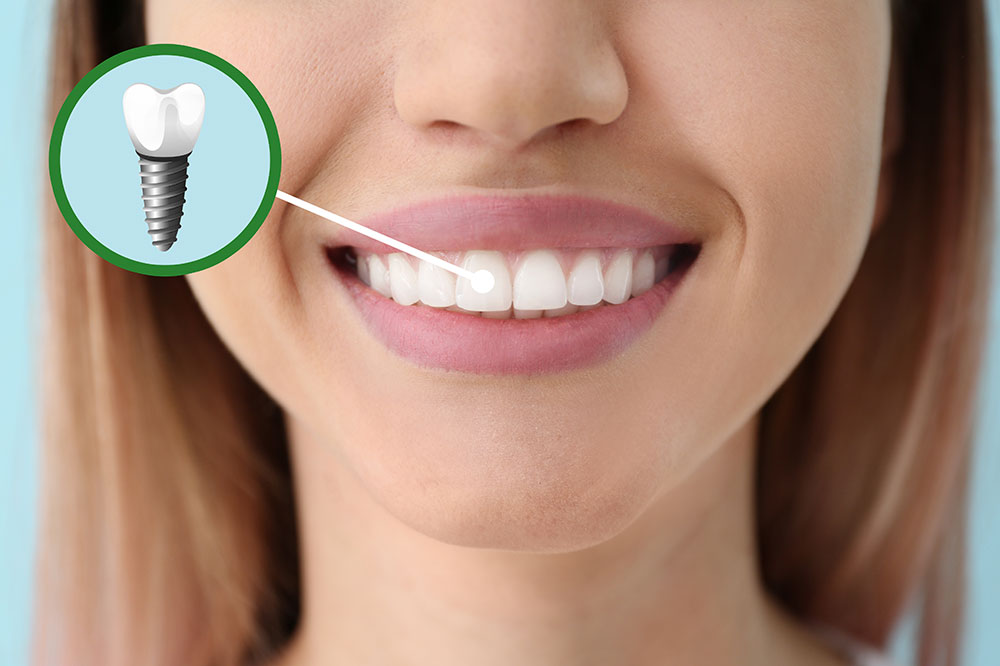What to Eat and Avoid After Getting Dental Implants

Dental implants are artificial teeth fitted surgically. They are suitable for individuals who have lost their healthy molars due to poor lifestyle habits, certain health complications, or accidents. The surgical procedure is commonly practiced, and various types of implants are used. But one has to be extremely careful during the recovery period. Doctors recommend specific changes in the daily nutrition plan. Here’s what one can and cannot eat with dental implants.
Foods to eat
After dental surgery, it becomes difficult for patients to chew the regular foods they usually include in their nutrition plan. Keeping this in mind, we have listed a few options that are easier to grind. These supplement daily vitamin, mineral, protein, and even carbohydrate requirements necessary for immunity and a speedy recovery:
Fresh fruits and mashed veggies
Fresh soft fruits with a pulpy center are relatively safe after getting dental implants. There are various options, including bananas, assorted berries, and peaches. The best part about fruits is they can be blended into delicious, nutritious smoothies. Fruit smoothies help curb those hunger pangs since most solid foods will be restricted immediately after the surgery. Among vegetables, mashed potatoes can be served with gravy and butter to supplement daily carb intake.
Eggs and dairy products
Eggs are the most versatile source of protein in the pantry, and there are many ways to prepare them. Hard-boiled, poached, half-fried, scrambled, and omelets are just a few examples. These are the perfect soft foods for a wholesome breakfast after getting dental implants. Add a glass of milk, some cheese slices, and fresh yogurt to help with digestion. Dairy products will replenish the calcium and protein requirements for good oral health. However, dentists recommend avoiding dairy for the first few weeks after surgery.
Soft meats
Chicken, turkey, ground beef, and soft fatty fish are safe to have in moderation. They must be shredded, finely diced, or pureed and can be added to pasta dishes or salads. Also, ensure the meats are slow-cooked and not left raw to lower the risk of infection. Dentists recommend gradually adding back one type of meat at a time, so it is easier to get accustomed to chewing with the new implants. Those who do not prefer meat can opt for tofu.
Cold soups
Avoid hot liquids after the surgery and during the recovery phase. The gums and implants cannot handle the heat, and it takes a couple of weeks for any sensitivity to go down. However, it is perfectly safe to include cold soups and broths made from popular meat cuts, bones, fruits, and vegetables. Popular choices include gazpacho and applesauce. These are easy to eat and pack many nutrients essential for recovery.
Oatmeal
Oats are an essential source of soluble fibers that are great for digestion. They are also easy to make and have for breakfast. Cooked oats can be practically swallowed without chewing too much. Try adding in some assorted berries to give the dish a little extra crunch. This type of crunch will not necessarily hurt the gums and new implants.
Foods to avoid
The list of foods to avoid is long, as many condiments and beverages can worsen the pain or trigger inflammation post surgery. So, we have grouped them into two broad categories:
Crunchy, sticky, and sweet foods
Avoid anything that has a hard outer shell, is extremely sticky, or tough to chew. It can damage the new molars, and a lot of residue gets left behind in the crevices of the teeth. The tiny leftover particles become a breeding ground for bacteria. Foods like steak, raw vegetables, popcorn, chips, processed snacks, baked goods, candied caramel, toffees, and baked confectionaries should be eliminated from the menu. Some alternatives like muffins are acceptable, but ensure there are fewer chocolate chips and no rich, sugary filling within the baked delight. Sugar residues increase the risk of bacterial infections and can also increase the risk of other health conditions.
Spicy, acidic, and hot foods
Anything that contains capsaicin, the main spice ingredient found in hot peppers, is a strict no-no when creating a meal plan after dental implant surgery. The heat can irritate the gums and muscles surrounding the newly placed molars and worsen teeth sensitivity. Besides dishes that feature hot peppers and spices, it is best to avoid fruits, vegetables, and beverages rich in acidic content. Oranges, tomatoes, and flavored sodas can damage the enamel and expose the dentin. Further, avoid beverages like tea, coffee, or piping hot soups. Dentists recommend the elimination schedule for at least a week or two after the procedure.
Other tips for a speedy recovery
Besides changes in daily nutrition, the following healthy habits can help speed up recovery and lower the risk of complications:
Eat balanced meals
Plan and portion out meals wisely to get a daily dose of nutrition and prevent unwanted hunger pangs. Never skip a meal, as the first few days post surgery can be a little problematic with the new set of teeth.
Maintain proper oral hygiene
Try to brush, floss, gargle, and rinse after every major meal. Maintaining proper oral hygiene is essential to lower the risk of bacterial infections.
Take good rest and care
It is advisable to take good rest during the recovery period. Also, ensure all treatments and topical gels are used as per the dentist’s instructions and on time. Skipping a single dose can cause delays in recovery and may also trigger unwanted pain.
If pain or discomfort persists during the recovery phase, immediate attention is advisable. Consult with a dentist at the earliest. Depending on the situation, they can modify the ongoing recovery plan or create a custom list of foods to eat and avoid with dental implants.






